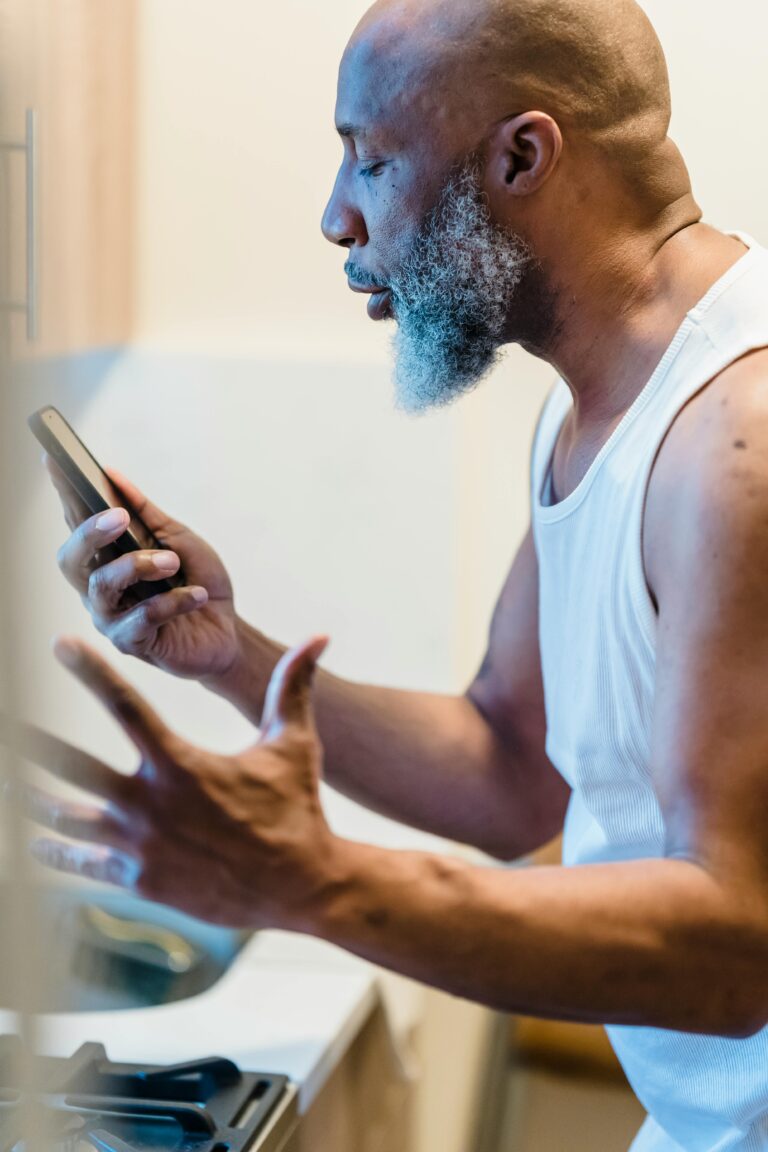Nowadays, books, periodicals, and talk programs are chock-full of advice for surmounting the communication disparities between men and women that have been the bane of romantic interactions. Nevertheless, their ideas may be useful for discovering your husband’s origins or making your time together more exciting, but they do not tackle the principal issue, which is how to cultivate a deep intimacy that informs every aspect of your shared life.toploisir.com saljofa.com beckmann 12l toploisir.com stenyobyvaci.cz saljofa.com stenyobyvaci.cz tutobon.com toploisir.com panske tricka bundy kilpi damske bundy kilpi damske dymytr povlečení stenyobyvaci.cz beckmann 12l
Owing to our generation’s unfamiliarity with passionate love, coupling has become transient. In a nutshell, our practicality has outweighed our capacity for love. Nobody is willing to let go of themselves and become exposed. Our relationships today are suffering because we have grown to be too sophisticated for ourselves. We don’t want to act foolishly out of love anymore.
Contrary to conversing about intimacy, most people are only acquainted with it through reading and have never experienced it. Intimacy can be defined as the ability to meet yourself when you are near someone else (aka Into-Me-See). Some therapists distinguish between two types of intimacy: other-validated and self-validated. The first is what most of us perceive as intimacy. The latter is more daring and holds the key to more personal growth.
Intimacy that is validated by others is something we are able to grasp naturally as youngsters. Your spouse must validate your disclosures to them and demonstrate openness, receptivity, and sensitivity to your vulnerability. It would be deemed a “not safe” setting if your spouse is unwilling or unable to confirm or affirm your sentiments, and you probably won’t feel comfortable talking. This position grants us immunity from suffering, jeers, or shame.
Nobody wants to be a fool, especially not one who is in love. What about being a Fool for Love, though? Is there a distinction? Folly, foolhardiness, and foolishness. We are all too aware of it. Where angels fear treading, fools rush in. This is accurate while using our hard-earned money to gamble. Could the same be said for gambling with our hard-earned hearts? Shouldn’t we exercise the same caution and care when deciding where, when, how, and why to put our love?
We can, however, be astute, wise, calculating, and perceptive in the ways of the world in an actual sense, too discerning to be taken advantage of or trusting. Intelligent enough to prioritize our safety and avoiding sorrow and heartbreak even when it involves the person we love. Too intelligent to accept the open-hearted love’s requirement for vulnerability.
Building and maintaining close connections is difficult because individuals evolve and change. Think about the following ideas to deepen intimacy in relationships:
- Disclose more to feel closer.
In his book Time and Intimacy: A New Science of Personal Relationships, Joel B. Bennett claims intimacy is a journey of discovery with another. Though it is simple to lose the desire to keep learning everything, there is to know about one another over time if one is not constantly attentive.

People who are openers—so-called because they encourage disclosure—have close talks with others. People with high self-monitors, often known as those who don’t open up or make it difficult for others to do so, struggle more in intimate relationships.
- Make time for deeply emotional conversations.
People frequently feel most connected during these times. When we’re fortunate enough to be able to do that, one woman observed, “it seems really intimate when we share our views at the end of the day.”
- Do something new or big together.
One woman talked about the moments when she and her partner are closest, such as when they have a fruitful conversation regarding a point of contention. However, she also stressed that: “is when we come up with something as a team. Raising the kitties, being incredibly kind to close friends or relatives. When we agree to do something for someone else, for example.”
- Relish the routine.
The information we acquire upon first encountering one another is unforeseen, which elicits powerful sentiments. Over time, we gradually become more predictable to one another. Sternberg discovered that this predictability has a benefit: It leads to intimacy, when “the couples are so connected to one other that the one doesn’t notice the other is there, much as the air we breathe might be taken for granted, despite its necessary to existence”
- Shake up the routine.
Sternberg asserts that we frequently follow scripts or well-established grooves while interacting in close relationships. The majority of feeling is the result of a script interruption. You have no emotion as long as you continue to perform the same old thing. However, if you quit doing what you’ve always done, suddenly someone feels. According to Sternberg, you can determine whether a relationship is “active” by instigating an unexpected event, such as one of you moving out on your own or taking a trip together to a new location. However, sometimes realizing how much closeness there is or was requires taking severe measures. Why not prepare for sporadic minor disruptions so that a huge one won’t be necessary to wake you up?
- Make it harder to walk away.
When Susan Tyler Hitchcock and her husband’s marriage began to sputter, they embarked on a year-long sailing expedition in the Caribbean as a family project. They felt “drawn together” as soon as they went and started making plans for the lengthy journey, Susan added. Their pattern of him withdrawing and her expressing rage or disappointment was interrupted. Additionally, she had a tendency to abruptly end a conversation when she felt threatened by a conflict or thought she had pushed too far. Because neither of them could leave the vessel, they had more honest and in-depth conversations.
- Ensure that it’s safe to be open.
What if you and your spouse are a mismatched couple and you desire a higher degree of open communication than your partner will ever be able to offer? So, keep working on becoming a non-judgmental listener. Comfort levels of verbal sharing normally rise with practice in an emotionally secure environment.
- Consider whether you’re a better match than you think.
The amount of intimacy needed to prevent loneliness and the amount a person can handle before being overstimulated varies from person to person. Those who have more intense wants will exert more effort to maintain intimate contact with their relationships, paying more attention and urging their partners to express themselves more. There would be a lesser association between closeness and relationship pleasure if the need is lower. In simpler terms, if you don’t have a desire for total unity, it’s likely you won’t be concerned if your partner doesn’t have much interest in discussing their inner life.
- Give credit where it’s due.
The loose talker can learn to acknowledge and value their partner’s preferred styles of expression. Some people misconstrue communication for closeness; the women, in particular, expressed that they wanted to talk about both positives and negatives, and that they wanted to talk about work in particular. They were looking for an emotional exchange, but it wasn’t there.
- Intimacy is more than words orsex.
It was only one-third of the divorced men in the sample that professed their inability to experience the desired emotional intimacy. However, some of them regretted missing their wives’ “far richer ways” of support. They desired tangible signs of closeness, such as being kissed or asked how their day was at the end and being welcomed with wide arms at the door. As long as the less verbal express their love in their own unique ways, they are deserving of praise for their considerate behavior and extra tolerance and understanding from the talk-deprived.
I work with couples who are simply “too smart” every day. Too intelligent to love or to take the chance of opening their heart one more time. All of our efforts to defend ourselves have backfired, making us intelligent, if not brilliant. But even with our partner, alone. Even with the person we most desire a connection with. Being unable to contact someone you love is one of the loneliest experiences one can have. Nothing is more excruciating than expending all our energy to guard our heart, only to find that we have shattered it.

The wisdom of The Fool.
Let’s be clear about this. I’m not referring to going the incorrect way down a one-way street. This isn’t about choosing a partner who has “great potential” and fantasizing about changing them into someone else or saving them with our love. Self-delusion and denial like that are extremely dumb and all too prevalent. The open-hearted wisdom of allowing love to be accepted and offered is the topic at hand. Here, we’re talking about the consciously difficult process of letting our hearts open to one another.
Allowing the possibility of hurt and vulnerability.
Recognizing both our own self’s fragility and the flaws of our beloved. Overcoming the tendency to be closed off to one another and to ourselves is the goal here. This is about changing from a condition of separation and quiet to a new manner of giving into loving and loving acts. We cannot distribute love without embracing vulnerability and accepting occasional missteps. This is an unavoidable, unvarnished truth. Love, in actuality, is all about ripping open hearts. We cannot give or receive the richness and depth of love until we will lay open our hearts. All other things are only shadows.
The posture of Love.
Consequently, if you resolve to be open to being captivated anew, to brave the possibility of being adored, and to fill the emptiness of discontentment and frustration that habitually arises in steadfast relationships. Or perhaps you’ve sought protection and cover, even if you’re not even in a relationship right now, and you think, “What the Hell! Go for it! I’m willing to try falling in love once more. Ready to fall for a love fool. Next, what? What does Love’s stance resemble? What exactly are we debating here?
Take the risk of loving first.
Risk not being heard, seen, or appreciated. Misunderstood. Accept the possibility of rejection and then try again without keeping track of your results. Not by making up a tale in your head about what it means to have your needs in a situation not satisfied by your spouse. Without spending money on compiling a long list of reasons, your partner isn’t showing you “enough” love. Or how it can all be a sign that you’re just not lovable.
Take the risk to open into each new moment fresh
As a result of open-hearted love, become a fool with your knapsack packed for the next adventure into the new day. The delight of what open hearts can feel and radiate is much brighter and more beautiful than the murky, stale illusion of closed-in safety we so frequently construct around us in our homes and in our hearts.
The heavy armor of our cautious hearts creates a foolproof barrier to love.
We block love’s ability to discover us and grow within us when we want perfect protection, despite the fact that we long to grow fully and deeply into love. We cannot possibly love each other without first accepting the risk of loving. Despite our want to love without fear of rejection. In actuality, it is only because of our vulnerability that we are even able to receive and offer love. When we are entrapped in our “safety first” lifestyle, we cannot truly love anyone, not even ourselves.
Wisdom from Nedowa Village
If intimacy’s worst adversary is fear, then its best ally is love. Genuine closeness can only be achieved by being candid and open in expressing our intentions and emotions. My primary goal is to support you in finding genuine closeness and experiencing life to the fullest. Seek expert assistance if need be.









+ There are no comments
Add yours